#not to mention it was BEAUTIFULLY expressionistic
Text
I will never stop being fascinated by movies and plays that came out pre- Hays code
#im so fr have yall ever seen a movie from the 20s??#im always shocked how ahead of their time they are#i mean. the queerness the anti-establishmentness the feminism the boldness#at least comapred to movies from like. the 50s#today i watched metropolis (1927) and IT WAS SO DELIGHTFULLY ANTI RICH PEOPLE#IM OBSESSED CUZ F THE RICH#not to mention it was BEAUTIFULLY expressionistic#hays code#hollywood#old movies#classic movies#1920s#metropolis#metropolis 1927#im realizing now that metropolis may have nothing to do with the hays code since its a german film#but oh well i still stand by this post#pre hays code movies my beloved#blue collar#anti bourgeoisie#anti establishment#urban utopia#1920s movies#movies stuff
9 notes
·
View notes
Text
Favorite film discoveries of 2019
Every year, my new-to-me favorites list always shocks me in some way. This year, the sheer amount of movies made in the 2010s on display is INSANE by my standards. Of course, most of the modern movies here are throwbacks or tributes to older styles of cinema, so maybe it’s not that shocking in the long run.
Another running trend this year: movies that are old but not as dated as we would wish. Many of the older films here deal with xenophobia and political strife in ways that still feel shockingly prescient today-- the more things change...
ONCE UPON A TIME... IN HOLLYWOOD (DIR. QUENTIN TARANTINO, 2019)
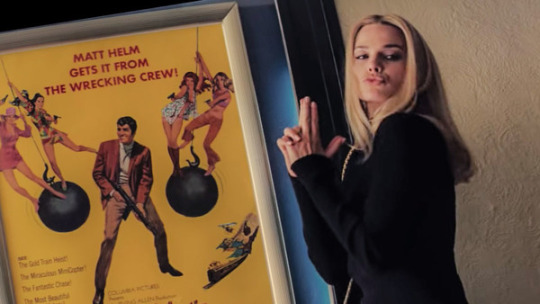
I never thought the day would come where my favorite movie of the year would actually be made after the 1970s, let alone by Quentin Tarantino. Then again, this movie is all about the end of Old Hollywood as well as a big love letter to the 1960s, so maybe it’s not that shocking a state of affairs. I adored this movie, the level of detail, the laidback yet elegaic vibe, the comedy and the relationships between all the characters. It was one of those movies where I loved even the scenes where nothing seems to be happening at all-- I mean, who knew Brad Pitt feeding his dog and watching TV could be entertaining?? But it is and I can't wait to see this one again!
INTENTIONS OF MURDER (DIR. SHOHEI IMAMURA, 1964)
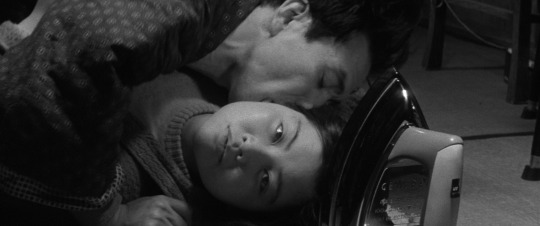
Intentions of Murder has an insane premise, one that runs the risk of being tasteless: a housewife in a miserable, exploitative marriage is raped by a sickly burglar during a home invasion. Even worse, she can’t shake him, as he’s suddenly infatuated and wants her to run away with him to the city. And weirder still: her current existence is so miserable that she’s TEMPTED. While abuse and rape are grim subjects for any story, Intentions is actually about a woman coming into her own and finally standing strong against all these men trying to use her. It’s a weird blend of drama and dark comedy, a truly savage satire on patriarchy and class-snobbery.
JOKER (DIR. TODD PHILLIPS, 2019)

I went into this movie expecting to think it was overhyped and when I first left the theater, I was all ready to say “it’s good but not THAT good.” But it ended up haunting me for weeks afterward, and I found myself thinking about how everything just tied up so well together, from the grotty urban hellscape which serves as the setting to Phoenix’s brilliant performance. It reminded me a lot of A Clockwork Orange in how intimate it lets you get to this violent man while never pretending he is someone to be glamorized or imitated.
SIMON (DIR. MARSHALL BRICKMAN, 1980)
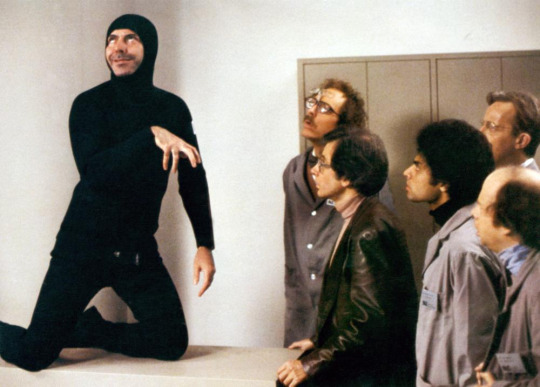
How do I even describe Simon? Alan Arkin is brainwashed by a group of overpaid intellectuals into believing he is descended from an alien toaster. Then he gets a messiah complex and starts gathering disciples as he rails against television, condiment packets, and muzak. It’s a little uneven at times, sure, but the satire is really inspired. The whole thing is like a combination of Mel Brooks, Stanley Kubrick, and Woody Allen’s styles, and it is quite hilarious for those who thrive on cult oddities.
PEEPING TOM (DIR. MICHAEL POWELL, 1960)
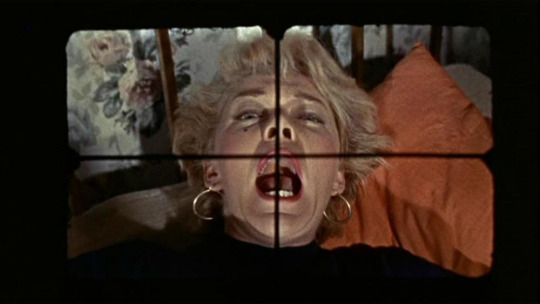
Though it came out the same year as Hitchcock’s Psycho and has been nearly as influential for horror cinema, Peeping Tom remains underseen by everyone save for film theorists. And what a shame that is, because this movie is more frightening than Psycho. Sure, that may be because Psycho is so predominant in popular culture and just so influential that it no longer has the same shock value, but there’s something about Peeping Tom that gets under my skin, something sad, even disgusting. I felt dirty after watching it-- and this is 2019!
MIDNIGHT MARY (DIR. WILLIAM WELLMAN, 1933)
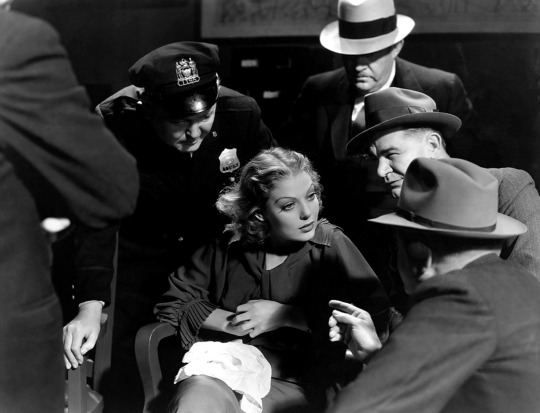
Loretta Young got one of her juiciest roles in this pre-code crime drama. Her Mary Martin is more than just a good girl forced into criminal circles-- she’s a complicated creature, compassionate and desperate and lonely and bitter and sensual all at once. This movie is a fast-paced, beautifully filmed ride, cloaked in that Depression-era cynicism that makes pre-code Hollywood of such interest to movie geeks the world over.
WILD BOYS OF THE ROAD (DIR. WILLIAM WELLMAN, 1933)
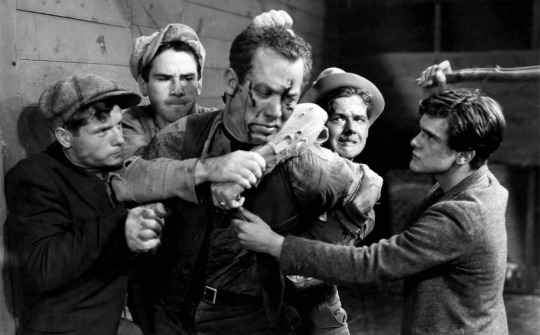
Wild Boys of the Road is a quintessential Depression-era movie, relentless in its bleakness and rage. That the main characters are all starving kids only looking for work makes their struggles all the harder to watch. William Wellman is quickly becoming one of my favorite directors: his gritty style and compact storytelling are just perfect for a ripped-from-the-headlines drama such as this. And the “happy” ending has one little moment that just knocks any smile you have right off your mug. Absolutely see this.
THE RUSSIANS ARE COMING, THE RUSSIANS ARE COMING (DIR. NORMAN JEWISON, 1966)
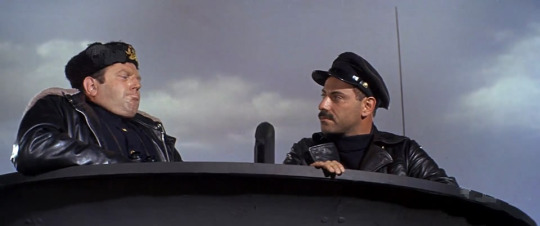
Sometimes, when you watch a movie only because a favorite actor is in it, you get subjected to pure trash like Free and Easy (oh, the things I do for Buster Keaton). Other times, you get cute gems like The Russians are Coming, The Russians are Coming, which, as you probably guessed, I mainly sought out for Alan Arkin. But the whole movie is hilarious, the best kind of farce comedy, populated by enjoyable characters and a sweet-tempered humanism that grounds the wackiness. While a little overlong, this movie is quite underrated-- and sadly, its satire of American xenophobia and Cold War panic is not as dated as we would like to believe.
ALL THE PRESIDENT’S MEN (DIR. ALAN J. PAKULA, 1976)
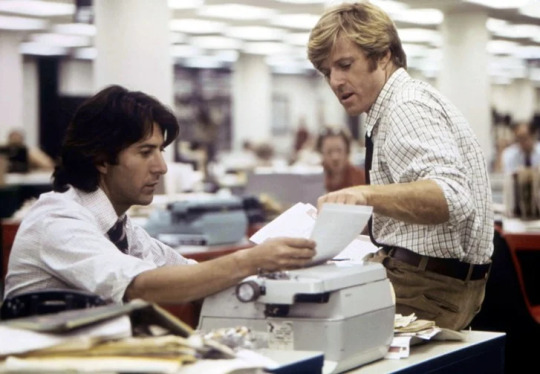
Who knew a political thriller where most people know the twist could be so intense and riveting? It’s about as nonsensical as feeling suspense when you watch a movie about the Titanic and hope the boat won’t sink-- but damn, it’s magical. All the President’s Men is real white-knuckle stuff, with Robert Redford and Dustin Hoffman projecting both youthful excitement and deep panic as they proceed with their investigation. It scarcely seems to have aged at all.
WHISPER OF THE HEART (DIR. YOSHIFUMI KONDOU, 1995)
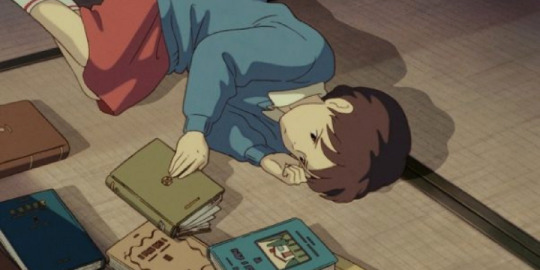
There’s a scene near the end of Whisper of the Heart where the protagonist Shizuku shows the finished first draft of her fantasy novel to her first reader, the grandpa of one of her schoolmates. She weeps because it isn’t the perfect image she had in her head, despite how hard she worked on it, but the old man tells her that it takes polishing and discipline to make the work come to its full potential. Few movies about artists are so honest about how hard it can be, how unsupportive others can be in their demand that everyone be “practical.” As a writer who struggles to create and constantly doubts herself, this movie spoke strongly to me. I recommend it to any creative person.
THE PHANTOM OF THE PARADISE (DIR. BRIAN DE PALMA, 1976)

I’d been wanting to see this movie since my high school phan days. Holy crap, is it WEIRDER than I could have ever imagined, a true camp masterpiece. I’m shocked it was never tuned into a stage show actually, but then again, we would miss those trippy camera angles and we wouldn’t have Paul Williams as one of the greatest villains of all time.
DUEL (DIR. STEVEN SPIELBERG, 1971)
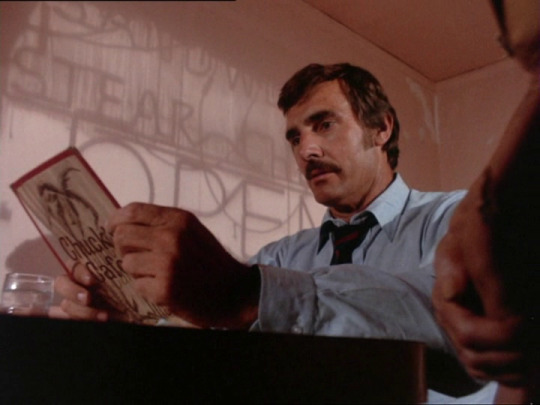
When people talk about the best movies made in the “Hitchcock without Hitchcock directing” tradition, why is Duel so seldom mentioned? The scene in the cafe, packed with paranoid tension and tense camerawork, alone should qualify it. Duel is most known as the movie which put the young Steven Spielberg on the map. It’s quite different from his later work, grittier and less whimsical for sure. Even the ending seems almost nihilistic, depending on how you view it. But damn, if it isn’t fine filmmaking.
CAROL (DIR. TODD HAYNES, 2015)

This gorgeous throwback to Douglas Sirk melodramas is also one of the best romantic movies I’ve seen in a while. Cate Blanchett and Rooney Mara have the sweetest, tenderest chemistry-- it was like seeing Lauren Bacall and Audrey Hepburn as love interests in a film. Unlike Sirk, there is little in the way of ripe melodrama here-- everything is underplayed, aching, mature. And I can say this is an adaptation that is better than the source book: it just feels so much warmer.
12 ANGRY MEN (DIR. SIDNEY LUMET, 1957

All I can say is that this was every bit equal to the hype. Common movie wisdom says people sitting and talking in a room is going to be boring on film, but movies like 12 Angry Men prove this is not so when you’ve got an excellently tense atmosphere, an inspired script, and a stable of fine actors to work with. Like The Russians are Coming, the Russians are Coming, this movie has not significantly aged-- much to society’s discredit.
A STAR IS BORN (DIR. GEORGE CUKOR, 1954)
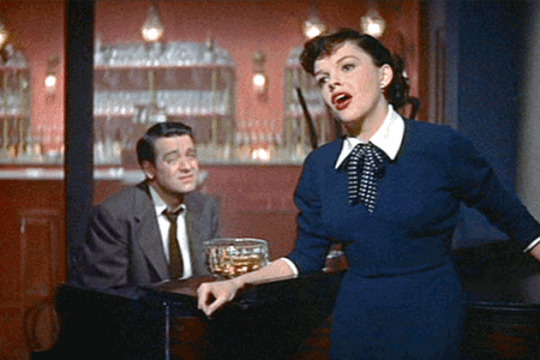
Another movie I went into not expecting to love as much as I did. When movies from the 20s or 30s tended to get remakes in the 1950s, I always find them too garish and big, victims of glossy Cinemascope and overlong runtimes. Compared to the lean 1937 classic original, I expected sheer indulgence from this three-hour remake. Instead, I got my heart torn out all over again-- the longer runtime is used well, fleshing out the characters to a greater degree. Judy Garland and James Mason both give what might be the best efforts of their respective careers, and the satire of the celebrity machine remains as relevant and scathing as ever.
BLANCANIEVES (DIR. PABLO BERGER, 2012)
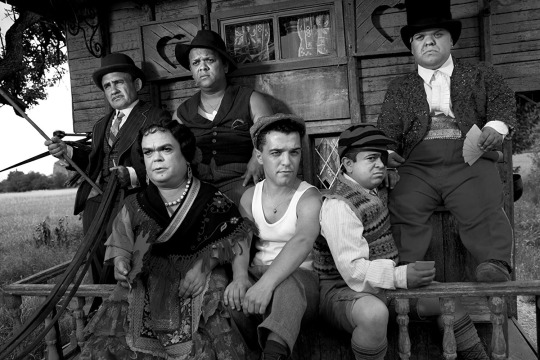
Oh, it feels like this movie was made for me specifically. It’s shot in gorgeous, expressionistic black-and-white. It’s set in the 1920s. It’s a clever adaptation of a classic fairy tale. It’s as funny and charming as it is bittersweet and macabre. Instead of more superhero movies, can we get more neo-silent movies like this? PLEASE?
THE FAVOURITE (DIR. YORGOS LANTHIMOS, 2018)
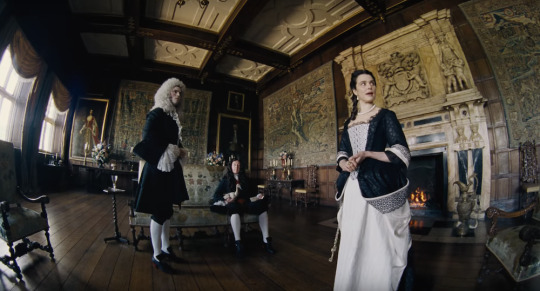
I’ve heard The Favourite described as a “bitchy lesbian Shakespeare play,” but this description, while a little true in terms of general tone, does not get to the heart of what makes this film brilliant. More than love or sex, this movie is about power-- particularly the corrupting influence of power. And it corrupts not only morals but love itself. Innocents become Machiavellian schemers. Lovers become sadomasochistic enemies. Good intentions turn to poison. This certainly isn’t a happy movie, but it is moving and, strangely enough, also hilarious. I was reminded of the chilly, satirical world of Kubrick’s Barry Lyndon more than once-- and for me, that is not a bad movie to be reminded of.
ON THE WATERFRONT (DIR. ELIA KAZAN, 1954)
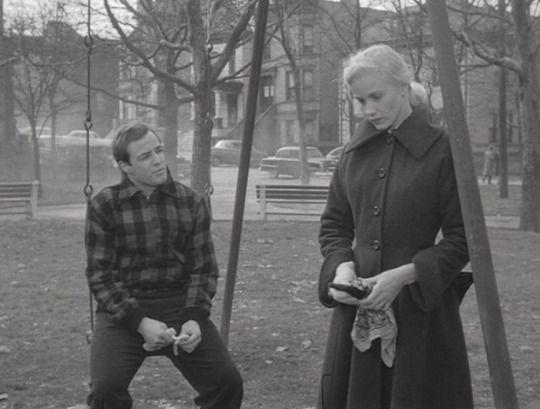
Another classic that’s been on my list forever that I was delighted to find worthy of its reputation. It’s a classic tale of redemption and social justice, perfectly acted and shot. While I still prefer A Streetcar Named Desire as far as Kazan is concerned, this might be a better movie in the objective sense. Actually, more than even Brando, Karl Malden is the acting highlight for me-- he plays a priest torn between staying silent or truly speaking for the Gospel by demanding justice for the poor parish he serves. Just brilliant work.
KLUTE (DIR. ALAN J. PAKULA, 1971)

A perfect thriller, just about, and a great example of the “NYC is hell on earth” subgenre of the 1960s and 1970s. Jane Fonda is a revelation: she feels so real, not at all like a starlet trying to seem normal if you know what I mean.
KISS KISS BANG BANG (DIR. SHANE BLACK, 2005)

As far as subversive noir goes, this is the most entertaining. I would put it up there with The Big Lebowski as far as goofy takes on Raymond Chandler are concerned-- I don’t even really know what to make of it, but I laughed my ass off anytime I wasn’t going “WHAT???”
What were your favorite film discoveries in 2019?
#thoughts#peeping tom#simon 1980#kiss kiss bang bang#intentions of murder#once upon a time in hollywood#joker#a star is born#blancanieves#the russians are coming the russians are coming#all the president's men#whisper of the heart#carol#the favourite#12 angry men#klute#the phantom of the paradise#on the waterfront#wild boys of the road#midnight mary#duel
151 notes
·
View notes
Text
Recently Viewed: Mirai
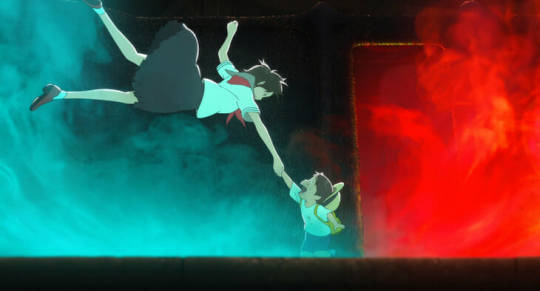
Just got back in from a screening of Mirai, the latest masterpiece from anime auteur Mamoru Hosoda.
If Wolf Children represents the director’s statement on the joys and sorrows of motherhood and The Boy and the Beast is all about fatherhood, then Mirai is his full-blown celebration of family in general (a theme he previously tackled in Summer Wars, albeit in a comparatively minor capacity), from the sometimes fragile bonds between siblings to the challenges of holding a marriage together with each new milestone. His protagonist, Kun, is a four-year-old boy threatened by the arrival of his baby sister (the title character), who throws his familiar routine into disarray: suddenly, Dad is cooking and cleaning, Mom is scolding him whenever he tries to play, and nobody seems to be paying him any attention. Jealous and confused, the formerly good-natured child transforms into a petulant, monstrous brat... until one fateful day, he encounters a mysterious girl in his garden: a teenage version of Mirai, visiting from the future.
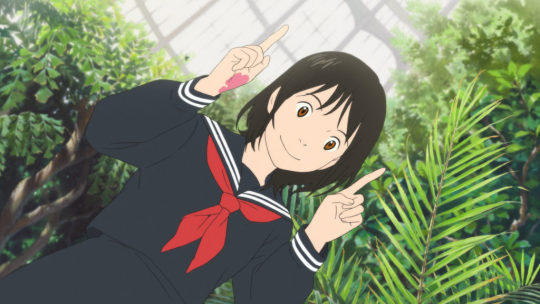
Soon, he finds himself whisked away on a journey through time that teaches him many valuable lessons. For example, that his parents are human beings with their own desires, making countless sacrifices and compromises in order to raise him properly. And that the world does not and cannot revolve around him, and he must learn to be more empathetic. And, most importantly, that love is not a finite resource: it unites us across generations, allowing us to grow and pass it on to our descendants.
The result is a wonderful, whimsical coming-of-age story that beautifully showcases Hosoda’s penchant for blending the mundane with the fantastical... as well as his talent for blending traditional cel animation with modern digital techniques. He’s certainly come a long way since Wolf Children’s stiff, lifeless CGI crowds; here, there are flyover shots of urban and rural landscapes that border on photorealistic. Of course, Mirai’s true stylistic triumph is the lost and found clerk in Limbo’s labyrinthine, metaphysical train station, who resembles an expressionistic paper doll.

Sorry, did I forget to mention that the movie’s kind of... weird?
#Mirai#Mirai from the Future#Mamoru Hosoda#anime#animation#IFC Center#Japanese animation#Japanese film#Japanese cinema#film#writing#movie review
14 notes
·
View notes
Text
Denzel Washington Leads First Great Tragedy of Macbeth Movie
https://ift.tt/eA8V8J
William Shakespeare’s Macbeth has proven to be one of the Bard’s most elusive tragedies for filmmakers. Despite being among his best known plays and full of visceral imagery like witches and war, murders and revenge, this allegedly cursed title has appeared genuinely damned on-screen. It thwarted masters like Roman Polanski and defeated would-be revisionists, such as Justin Kurzel only six years ago. But with Joel Coen’s The Tragedy of Macbeth, a haunting and meditative work from one-half of the Coen Brothers, the Scottish play finally gets its due. How much more marvelous then that it does so with two astonishing performances from Americans: Denzel Washington and Frances McDormand.
Shrouded in stark blacks and whites, shadows and deceiving halos of light, there is a chilling unnaturalness to The Tragedy of Macbeth, which runs counter to most Shakespearean cinematic adaptations. Rather than reach for the naturalistic sweep of epic filmmakers like David Lean or Franco Zeffierelli—as has been the popular method of translating Shakespeare to screen since Kenneth Branagh’s run in the ‘80s and ‘90s, not to mention Zefferelli’s own contributions—Coen favors a claustrophobic and oppressive color palette. His and cinematographer Bruno Delbonnel’s compositions echo F.W. Murnau, Carl Dreyer, and other German Expressionists, matching the artifice of the stage with cinema at its most beautifully artificial. The director even shoots in the classic Academy aspect ratio of 4:3 and in literal black and white.
The result is a movie that prefers to quietly brood instead of scream—and to execute its heavy deeds in the dead of night rather than on battlefields. They’re unorthodox choices, but like the lead performances, they prove to be convincing ones.
When The Tragedy of Macbeth begins, those main characters appear strikingly different from how we’re accustomed. Aged and at a point in life where their future prospects should seem dimmed, Washington and McDormand’s Macbeths embody a wiser and more calculating personification of ambition. We meet Washington’s Macbeth on the outskirts of a medieval field where he’s already stewing. Elsewhere and closer to the seat of power, old King Duncan (Brendan Gleeson) has signaled that he will bestow his greatest glories on the presumed heir to his throne, Malcolm (Harry Melling). Bitter and left behind, Lord Macbeth (Washington) looks adrift in the wilderness when he comes across three Weird Sisters, played all by Kathryn Hunter. Emerging from the mist like three Grim Reapers who’re intent on playing a game of chess, the witches promise Macbeth the crown if he’ll do just one thing… kill his king.
Washington’s Macbeth doesn’t take much pushing from either the witches or his equally Machiavellian wife, Lady Macbeth (McDormand). And on the following night, Macbeth steals into the king’s bedchamber as he slumbers. There’s no hesitation to Washington’s iteration. He even pauses to take a quiet moment of satisfaction when Duncan awakens, realizing what is about to occur. The treason is coolly executed. Even so, loose ends soon multiply as Malcolm flees and the barely crowned Macbeth must fend off suspicions of tyranny, including by the ever watchful Macduff (Corey Hawkins).
At the New York Film Festival press screening for The Tragedy of Macbeth, McDormand revealed she and Coen, who she produced the film with, only ever considered Washington for the title character because “you don’t make lists for a generation’s Macbeth. One’s born and then he plays it.” Having seen the finished film, her argument is persuasive. Older and grayer than your typical Scottish usurper, the formidable stage and film actor eschews a Macbeth who rants in favor of one with the cynical patience of old age. There is a ruthless efficiency to his every gesture and pause, at least in the character’s early scenes before the crown wears heavy.
As an actor who’s done Shakespeare before on stage and screen, the latter of which in what I’d argue is still the most enjoyable Bard film, Much Ado About Nothing (1993), Washington commands complete authority over the film’s brisk 105 minutes. Thus when things inevitably go to seed, it gives the actor that much more to chew as he lets a tyrant’s hair down.
McDormand is similarly excellent as the Lady of the House who discovers her eyes are bigger than her stomach. Like her on-screen husband, McDormand makes no effort to hide her American accent, nor does she feel the need to commit either entirely to the rhythm of iambic pentameter dialogue or the more naturalistic readings that modern screen versions of Shakespeare employ. She comfortably alternates between the two, switching to whichever the very scene, or specific inflection, demands.
In Coen’s hands, both characters are unmistakably tragic, if rarely sympathetic. There has been much speculation in the press about Joel Coen helming this picture on his own and without his brother Ethan for the first time in both men’s careers. While I cannot speak as to why Joel flew solo on this production, The Tragedy of Macbeth only sparingly features any of the hallmarks associated with traditional “Coen Brothers” fare. Select scraps of verse, and passing character beats, reveal an occasional sense of gallows humor. But by and large, the film is as ruminative and apocalyptic as its title would suggest. There is no humor or irony to the flashes of brutal violence here. Similarly, the fates of side characters are mournfully lingered upon.
Given the film’s A24 pedigree, it’s likely some younger viewers will be drawn toward comparing the movie to the indie distributor’s recent efforts. However, with Coen balancing between long deep focus compositions and extreme closeups of his actors at their most pained, The Tragedy of Macbeth is clearly drawing from older traditions. I was particularly taken with how the three witches’ presence is hinted at even when they’re off-screen, with vultures drifting across fields and Dunsinane Castle like vampire bats.
In direct contrast to even the most recent Macbeth movie starring Michael Fassbender and Marion Cotillard, Coen and his troupe look inward. They preserve much of the original text, and ultimately reveal that in a visual medium, Macbeth has been a horror movie all along. And like certain damned spots, once you see that, it’s impossible to forget.
The Tragedy of Macbeth had its world premiere at the New York Film Festival on Sept. 24. It opens in theaters on Dec. 25, and on Apple TV+ on Jan. 14, 2022.
cnx.cmd.push(function() { cnx({ playerId: "106e33c0-3911-473c-b599-b1426db57530", }).render("0270c398a82f44f49c23c16122516796"); });
The post Denzel Washington Leads First Great Tragedy of Macbeth Movie appeared first on Den of Geek.
from Den of Geek https://ift.tt/3CB1OX0
0 notes
Video
youtube
Erik Odsell introducing a new studio single: Human
November 2020 - Erik Odsell is a talented singer and songwriter who loves to create expansive and original music. His sound often feels like a crossroads in which different musical influences meet and collide beautifully. In fact, his sound feels like a stunning combination of pop, rock, electronic music, singer-songwriter melodies, and so much more. He is an amazingly talented performer who knows how to connect with the audience on a deeper level, and what’s impressive about his sound is that it is heavily focus on the details. By that I mean that each element in the mix seems to be tailored to absolute perfection, giving the audience a fantastic feel and allowing people to truly connect with this release.
The sheer variety of sounds, in my opinion, is something that really adds more depth to the listening experience, giving the audience a more diverse environment to focus on. What I mean is that a lot of musicians looking to make catchy tracks tend to fall into a trap a bit, and they stick to one sound, one color if you will. As a result, their music might result a bit mono thematic and greyscale. This is definitely not what is happening here, as Erik has a gift. He knows how to use sounds the way an expressionist painting uses different tints. He creates a vivid and imaginative picture of notes, melodies, hooks and musical phrasing, connecting with his audience on a more visceral emotional level. This is definitely what is going on with his most recent studio single, “Human.” As the title might imply, this is a song that is very honest and incredibly easy to relate to. We all belong to the human connection, and we can all empathize with what Erik’s exploring in this beautiful new song. The song actually stems from Erik’s reflections on modern politics, not only in Europe, but also in the United States and throughout the entire world. At times, it feels like political figures and leaders tend to use rhetorics in order to persuade people and control the masses. However, they seem to forget of something that can be quite important: the fact that we are all human beings, regardless of our background and social status. Erik advocates that upholding human values is indeed more important than pledging allegiant to some blanket political manifesto, and I personally could not agree more. People should definite by their humanity, not by political parties! Concept aside, I really love the integrity of the song and the quality of the mix in a more immediate musical sense. Like John Lennon used to say, it’s important for music with a message to be catchy, in order to relate to a broad range of people. This was kind of the concept that inspired Imagine: a super-catchy song that anybody can enjoy, combined with an incredibly strong social message, which values people beyond religious or political affiliations. Although “Human” and “Imagine” are different songs in many ways, I think that there is definitely a similarity in these two tracks, as in both are very appealing to a broad pool of listeners and both share a deeply important message with a global audience. The song’s matching music video also deserves a special mention. The story is truly poignant, perfectly matching the sound of the track. The story concept actually came from Erik himself, who collaborated with director Daniel Abrahamsson (HippMedia) in order to make it happen.
The size of this song has got epic proportion: the sound of this release makes me think of iconic bands such as Queen, Journey or even ABBA, but with a more modern feel. The video showcases scenes of people, looking deeper at their humanity, alternating with shots of Erik and his band performing the song and creating a ripping showcase for the audience (On another note, this video really makes me wish live gigs would come back soon, I miss live music so much!)
Find out more about Erik Odsell, and listen to “Human” now. This song is currently available on Spotify, and every digital music streaming platform on the web!
https://open.spotify.com/track/7IHLdYpczf6WbhkX1fdLSQ?si=y4om0SVmTVKysbpnLUjYUw
http://www.erikodsell.com/
http://www.facebook.com/erikodsellofficial
http://www.instagram.com/erikodsell
0 notes
Text
the bridal couple is not catering for plus-ones@!$&&* sondra celli dress prices
Not that expressionist hats were a new thing for the '30s, but the trends of the decade did call for more attention-grabbing styles, especially as popularized by the strange and surreal hat styles of designer Elsa Schiaparelli (she made ice cream cone and shoe hats!) emerald prom dress. Trendy '30s hats were smaller in size than predecessors of previous eras (how can we forget the humongous headgear of the Edwardian period!) and were worn at a tilt on the head, often with a geometric flavor to their designs so that they looked like cones, squares, triangles, diamonds and other 3-D shapes.
Recently refreshed in a stunning, contemporary style inspired by the coastal life, the pillarless Pacific Ballroom reflects the fluidity of the ocean, swirling sands, and wooden boardwalks. The elegant ballroom features a modern honeycomb ceiling with earthy wooden accents and stylish amber crystal ellipse drop chandeliers, as well as state-of-the-art audio and visual technology for a memorable wedding. The warm and sophisticated wedding venue boasts a private driveway leading into a spacious reception area, perfect for grand entrances into lavish celebrations for up to 650 guests.
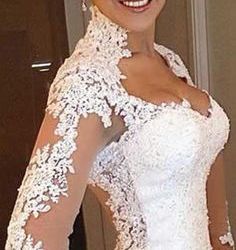
HOW TO ENJOY IT: Wearing a '60s swimsuit is not like wearing a Little Black Dress. You will be bright, bold and beautiful ' if you embrace it! Look for suits with a color palette that compliments your skin tone, hair & eyes. I love blues & green (essentially 'cool' colors) because I'm blonde. Darker skin tones pair well beautifully with brights & lights ' think orange, red, yellow & white. Brown and black always looks better on a bronze body.
Simply address your guest by name on the invitation card. Most people know that if there is no mention of 'and guest', the bridal couple is not catering for plus-ones sondra celli dress prices. But you can always seat singles together so that they can mingle and talk. There is just one exception to this rule though ?C it would be the polite thing to do to invite your guests' significant others and partners of those in long-term relationships.
Samantha: It turned out how I imagined it halter homecoming dresses. I reminded myself to just have fun and enjoy our big day macys homecoming dresses, though it was more rushed than what I would have liked it to be. We are very thankful for our bridal entourage and friends who helped us. In my wedding speech, I said, 'I hope we will still be friends even after the wedding!'

So have a good talk with your groom-to-be. Discuss what's truly important to the both of you. Is it the church ceremony? Or is it about treating your extended family to an impressive banquet? Would you prefer to splash out on a couture gown but scrimp on your jsweddenladress20107 wedding flowers? You can't have everything, so it's all about priorities here.
There was the overflow of mod styles from the rebellious '60s beautiful wedding dresses, there was the peace-love-brown rice passions of war protestors, the leisure suits of the too-cool-for-school dudes, the tight jumpsuits of the dancing divas, and more. It truly was a potpourri of an era, where similarly to the '80s, the motto 'anything goes' was accurate and accepted.
You May Also Like:
From fit style tailoring to modern fashion and simple lines light ...
Strapless Sweep Train Mermaid Lace Sweetheart Wedding Dress
white dresses for girls&bridesmaid dresses — play a round of ...
according to their depth and the feeling is writer pronounced ...
++#(@but subject rite is also of paramount ...
0 notes
Text
Chance encounters
Characters: Sungjin & exchange student!OC & Dowoon
Setting: college au so it fits @day6imagines September task ^^
Genre: slice of life, little angsty bittersweet towards the end
Summary: That’s just how life is: a series of chance encounters colouring our story, teaching us new things, giving us unforgettable memories.
Words: 2.4k
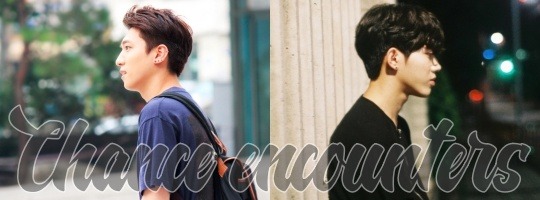
“Hey, you look lost. Do you need help?”
Well, as much as I don’t want to seem lost on my first day of a new university, I appreciate the help, so I quickly glance up from my paper sheets and the low quality campus map that doesn’t help me at all to find the C.VI. lecture room. There aren't even letters on these ridiculously huge wooden doors in this building. Not to mention, I could only find four rooms on the ground floor, although I’m sure I need the sixth one.
However, I don't understand one bit of what the kind, helpful guy said since I don't speak his language. My knowledge is kind of stuck between Thank you and How much does it cost? that my brand new roommate in the dorms taught me yesterday. But I’m quite sure I can't use these in this situation.
“I'm sorry, I don't speak Korean,” I apologize quickly for the lack of my reaction because the guy started to look funny at me and a little suspicious, too. He has nice features, pretty caramel eyes and a soft smile that's hard to look away from. I guess he’s a few years older, looking all nice in his light blue dress shirt but not too elegant with his backpack on one shoulder.
“You look lost,” he probably repeats what he said earlier in the language I know and that makes me smile awkwardly. His words aren’t offending at all, he’s just stating facts.
“Do I?” I giggle a bit, playing with the ends of my hair. It has a slight grape colour in it blending into the natural brown. I quite like it and I’m glad I don't make the odd man out here at all. Not long ago, I saw a girl with blue hair so I’m positive that lucky me came to a liberal college.
“Well, I was just here,” he points to a chair in the hall’s waiting area, “sipping my coffee and I noticed you walking back and forth at least three times, so yeah, I assumed you were lost.”
“Nice conclusion. I can't find the lecture room where I should be...” I trail off sneaking a glance at my watch and my eyes widen in shock as I check the time. “...like right now.”
“It's okay, if it's a lecture, nobody will say anything,” the cute guy with nice smile tries to soothe my nerves but I only pout in response.
“I know. It’s just that this is my first day here and I don’t want to leave negative impression as the arrogant exchange student,” I shrug lost in my thoughts.
Being able to come here with the scholarship program was a big dream of mine and I’m lucky enough to be able to study my major here in English. I would be in big trouble if they only had native language admission option.
“I see. Where do you have to go?” he nods at me, understanding and I like the way English words taste on his tongue. I like his slight accent, it's cute, too, like the rest of him.
“C.VI.” I check once again in my timetable and the guy makes an oh sound in realization.
“Well then you are in the wrong building.”
“What? I’m in the wrong place?” I blink eyes bulging and I don’t know if I should cry or laugh at my silliness. However, my guardian angel doesn’t look at me like I’m stupid.
“Yeah, this is the E building. But don't worry, the C is really close. You leave through the southern exit and you will see a glass building on the other side of the road, that's the one you need.”
“Oh shoot, I would have been looking for it here all day. Thank you so much! I would really like to properly thank you, like with a coffee. But I’m a hurry and uhm... ” I’m rambling since I don’t want to be more late than I already am and I just say the first thing that comes to my mind without thinking. He said he drank coffee, didn’t he? It’s just common courtesy to offer something in exchange for his help and kindness. But maybe he doesn’t even understand my flustered speech so I take out a folded paper of my messy bag and scribble down my name and number on it. “Call me whenever you are free and I will pay for a coffee.”
“But...” he tries to protest as I force the paper into his hands. I shake my head, shutting him up.
“Not buts. Don’t be shy about it. You just kind of saved my life, or at least my first day here so it’s the least. See ya!” I wave childishly and practically sprint out of the exit he showed me and yes, there is the huge glass building with slightly weird architecture in front of me. How could I mix the two buildings up?
Once I enter this one, finding C.VI. is a piece of cake, I don’t even need to ask for anybody else’s help. The professor is already talking by the time I make it into the room but just like the cute guy said she doesn't even pay attention to me. So wordlessly, I make my way to one of the empty seats of the second row. The teacher’s monotonous speech about the academic quality and the importance of the subject dulls in the background as I pack out my notepad and writing tools.
We are around ten minutes into the lesson when the door opens again and a sleepy-looking boy slips in. The prof pays him no attention and continues the boring lesson about Psycholinguistics while said boy approaches the empty seat next to me. When he’s close enough, he whispers something to me and I can only guess he’s asking if he could sit down. I nod briefly and smile at his politeness. When he slumps down, he drops his bag to the floor with a louder thud than it was needed. He looks startled for a second when suddenly everybody focuses on him but luckily, the professor keeps talking like nothing happened.
“Can I… ?” the boy whispers gesturing towards my collection of pens. I almost laugh because even if we don’t speak the same language I know exactly what he wants.
“Pick one,” I offer with a smile and watch in amusement as his eyes go wide. He looks young, eyes expressive like beautifully colourful expressionist paintings, his dark hair slightly curly which is a nice addition to his boyish features.
“Thanks,” he switches quickly to the common language of ours and I wonder how a boy so cute and young can have a voice deeper than the Pacific ocean.
During the lesson, I can’t help that my mind keeps recalling my recent meeting with that helpful guy and his heart-fluttering smile. Deep inside I hope he would call soon. It would be nice to have somebody around in a foreign country.
Almost an hour and a half later, everybody is packing, fleeing out of the room, relieved that the class is finally over. And here I am worrying about how to get to my next class. I don’t trust myself anymore with these things. So when my seatmate turns to me to hand back the pen he borrowed, I ask for his help.
“Can you help me find this room?”
“Uhm, sure,” the boy takes one quick look at the timetable I have in my hands then cracks a smile, exclaiming: “Oh I have the same class! Then we can go together.”
“Great!” I smile back collecting all my stuff in my arms, following the crowd towards the door.
“I’m Dowoon by the way,” the guy speaks up shyly and I also introduce myself quickly, letting him know some brief information about me like where I came from and stuff like this. He listens attentively, looking straight ahead but I manage to get him to answer a few questions like what he wants to do as a performing artist major and it turns out that his first pick was actually music but he ended up here. He says he’ll wait until the end of the semester to think about transferring.
We talk a lot about the school, the country and things we like during break time and even though Dowoon looked quite mysterious at first, he can be chatty when he lets somebody in. I’m just happy to be one of the privileged.
A bunch of students wait in a little seminar room, everybody excited about our first practical class this year which is really important for theatre majors like myself. My breath gets stuck in my throat when a familiar figure steps into the room seconds after the lesson was supposed to start. The cute guy who helped me in the morning is now walking straight towards us, keeping his gaze on the papers in his hands. I almost wave to him, all giddy and smiley when he looks up and his face is all serious and modest.
“Hello class! Let’s get to it,” he clap his hands and my jaw hits the floor as the realization slowly sinks in. “My name is Park Sungjin, you can call me either Mr. Park or just prof. Outside of class I go by Sungjin but I’m here to teach you about the basics of the art of improvisation in theatre culture.”
I gape at him dumbfounded until Dowoon nudges my side and I try to compose yourself. Isn’t he too young to teach? Okay, there’s some maturity behind his youthful appearance but still! It’s unfair.
The prof makes us sit in a circle and we do get-to-know each other games and Activity on a whole new level where we have to re-enact a movie scene and the others have to guess it. Nobody disses others for their broken English, everybody is really open-minded and supportive. It’s the most unusual class I have ever been to but so far, the most pleasant and funny one, too. The only drawback is the teacher himself. Well, not exactly he is the problem but the fact that cute guy from earlier is a professor, a great one at that. The worst is that he doesn’t even look at me when he doesn’t have to. I’m about to become resigned to being ignored when he calls my name before I could leave the room after class.
“Do you have a moment?” he asks and Dowoon looks past his shoulder with questioning eyes while he holds the door for me.
“Go ahead. I will catch up,” I tell him and only turn back to Mr. Park when I hear the door click. I'm not sure why but I feel bashful and embarrassed all of a sudden. I didn’t expect to be left alone with Sungji... Mr. Park, I remind myself.
“I see you already found a friend,” he notes and I can’t decipher the stuffiness in his tone.
“Yeah.”
“Good,” he smiles, but it seems somewhat forced. He scratches his nape and it’s weird, he knows it, I know it. He laughs a bit. “Look I don’t want you to be awkward around me. You asked your teacher out for a coffee. It happens, not often but don’t sweat it.”
“I won’t,” I promise him and he tells me I should go after my friend. I do as he says, he’s my teacher after all no matter how salty I am because of this.
“What did he want?” Dowoon looks up from his phone curiously when he sees me.
“Nothing much, just something about my internship,” I shrug and the lie slips my mouth easily. A bad sign. “How about we grab lunch?”
“That’s the idea! I’m starving!” he exclaims and we practically run towards the canteen area.
Little did I know back then that both boys will leave a beautiful imprint on my heart when I leave the country a semester later.
One of them breaks it but it’s not his fault. I’m simply foolish enough to fall for him. I should know better than to develop a crush on my attractive, funny and kind professor who smiles at me a lot more than he should. He agrees to that coffee too eventually, after I get my grade and there’s something sad in his usual smile when we get our Americanos.
“Wrong timing,” he says, regret lacing his words and his soft fingertips run alongside my jaw. He doesn’t have to say more, I know what he thinks about. I had a feeling, a hopeful thought that I can’t be indifferent to him either. But the rules! We don’t make them but we have to follow them. I would never risk his career over an infatuation. It will pass, I tell myself and maybe, sometime in the future, it really will.
“Take care,” Sungjin says his goodbye stroking my cheek lightly and when I watch him go, my heart seizes painfully.
And Dowoon? In his case, I’m the one who breaks his heart. I treat him as a best friend even though I know he only has eyes for me. Autumn is full of laughter, tag games in the midst of falling leaves, movie nights and library dates. When he holds my hand, it’s warm and nice but I can’t look at him like that. He’s a friend, a little brother and when he inches closer, I turn away my head so his lips fall onto my cheek instead of my mouth. It feels like betrayal and I see the sadness clearly in his eyes, even if he laughs it off.
“I do love you...” I mutter apologetically, avoiding his gaze. “Just…”
“Not like that. I know,” he nods and wraps his arms around me like he always does. It’s his way of telling: he’s here, he will always be by my side if I ever need him.
It was all meant to end anyway, I have known this ever since I got the scholarship. But that’s just how life is: a series of chance encounters colouring our story, teaching us new things, giving us unforgettable memories. Funny innuendos during improvisation classes or those banana milk exchanges with a shy, sparkling eyed boy. On the plane back home when I leave Korea with a nostalgic smile, I realize: I don’t regret anything. Nothing at all.
#day6writersnet#kkreationsnet#day6 scenarios#day6 angst#college au#sungjin angst#dowoon angst#sungjin scenario#dowoon scenario#stories
54 notes
·
View notes
Text
Arthur Smith was born to Jamaican parents in Cuba in 1917. His family settled in Brooklyn in 1920 and Smith showed artistic talent at an early age, winning honorable mention as an eighth grader in a poster contest held by the American Society for the Prevention of Cruelty to Animals.
Encouraged to apply to art school, he received a scholarship to Cooper Union for the Advancement of Science and Art. There he was one of only a handful of black students, and his advisors tried to steer him towards architecture, suggesting he might readily find a job in the civil sector of that profession.
His lack of proclivity for mathematics eventually forced him to abandon this path, however, and he turned to commercial art and a major in sculpture, training that would prove invaluable. After graduating in 1940, Smith worked first with the National Youth Administration and later for Junior Achievement, an organization devoted to helping teenagers find employment.
He took a night course in jewelry making at New York University. That and the friendship with Winifred Mason, a black jewelry designer who became his mentor, set him on the course of his adult artistic life. Mason had a small jewelry studio and store in Greenwich Village, and Smith became her full time assistant. He subsequently moved from Brooklyn to the Village’s Bank Street.
In 1946 Smith opened his own studio and shop on Cornelia Street in the village with the financial assistance of a near-stranger who wished to undermine Mason because of bad feelings over business transactions. Cornelia Street was an “Italian block” then, and Smith suffered racial violence from some of his neighbors. His store-front windows were smashed on one occasion and he was made to feel dangerously unwanted.
Soon after, he moved to 140 West Fourth Street just 1/2 block from Washington Square park, the heart of Greenwich Village where as an openly gay black artist he felt more at home.The new store was better located business-wise and socially, and Smith’s career began to take off. In addition to selling from this new location, he started to sell his wares to craft stores in Boston, San Francisco, and Chicago.
By the mid-1950’s he had business relationships with Bloomingdale’s and Milton Heffing in Manhattan, James Boutique in Houston, L’Unique in Minneapolis, and Black Tulip in Dallas. An important early influence on Smith’s career was Tally Beatty, a young black dancer and choreographer. Beatty introduced Smith to the dance world “salon” of Frank and Dorcas Neal, where he became acquainted with some of the city’s leading black artists including writer James Baldwin, composer and pianist Billy Strayhorn, singers Lena Horne and Harry Belfonte, actor Brock Peters, and expressionist painter Charles Sebree.
Through Beatty, Smith also began to design jewelry for several avant-garde black dance companies, including, in addition to Beatty’s own, those of Pearl Primus and Claude Marchant. These commissions encouraged him to design on a grander scale than he might otherwise have done, and the theatricality of many of his larger pieces may well reflect this experience.
In the early 1950’s Smith received feature pictorial coverage in both Vogue and Harper’s Bazaar and was also mentioned in The New Yorker shopper’s guide, “On the Avenue.” For many years thereafter he ran a small advertisement in the back of The New Yorker. By the 1960’s he had begun to use silver more readily in his jewelry, and as his client base increased so did his custom designs.
He received a prestigious commission from the Peekskill, New York, chapter of the National Association for Advancement of Colored People, for example, to design a brooch for Eleanor Roosevelt, and he made cufflinks for Duke Ellington that incorporated the first notes of Ellington’s famous 1930 song “Mood Indigo.” In 1969 he was honored with a one-man exhibition at New York’s Museum of Contemporary Crafts (now the Museum of Art and Design), and in 1970 he was included in Objects: USA, a large traveling exhibition organized by Lee Nordness, an influential early dealer in craft objects.
Smith had had a heart attack in the 1960s, and by the late 1970s his health had declined. The shop on West Fourth was closed in 1979 and Art Smith died in 1982.
After his death 3 major exhibits were organized celebrating his work; “Arthur Smith A Jeweler’s Retrospective” at the Jamacia Arts Center in Queens NY, 1990, “Sculpture to Wear; Art Smith and his Contemporaries”, at the Gansevoort Gallery, NYC, 1998, and “From the Village to Vogue” at the Brooklyn Museum., 2008. Small catalogues from the 2 museum shows are available. The definitive collection and exhibit of all the artist jewelers of Art Smith’s generation is beautifully illustrated and discussed in “Messengers on Modernism American Studio Jewelry 1940-1960”, written by Toni Greenbaum published by Flammarion and the Montreal Museum in 1996.
ART SMITH, THE ART OF PRECIOUS METAL Arthur Smith was born to Jamaican parents in Cuba in 1917. His family settled in Brooklyn in 1920 and Smith showed artistic talent at an early age, winning honorable mention as an eighth grader in a poster contest held by the American Society for the Prevention of Cruelty to Animals.
0 notes
Text
Chicago - September 2018
Just back from the Windy City and a fantastic fair going experience at the seventh edition of EXPO CHICAGO. Operating since 2011 under the banner of The International Exposition of Contemporary and Modern Art, the fair at times has struggled to deliver on its broad scoping and aspirational billing. This year, however, EXPO CHICAGO found solid footing as an exciting and focused contemporary art platform. With modern art no longer really sharing the stage, over 150 exhibitors from 30 or so countries showcased works of emerging and established contemporary artists which spanned traditional and creative mediums and reflected broad international diversity. While the huge construction project at the Navy Pier created some initial trepidation among fair goers, the chaos outside did not detract from the well organized and beautifully executed gallery presentations set up inside the exhibition hall. All-in-all, this year’s edition was a great leap in crystallizing the fair’s identity as a top-notch contemporary marketplace in the crowded global art circuit.
Fair highlights among the younger generation of artists included: Johnny Abrahams’ “Untitled (JA.02.18)”, 2018, oil on canvas (72 x 48 in.) which featured four imposing vertical black forms set against a white background with slight points of contact between each that dynamically accentuated the positive and negative spaces; Rebecca Ward’s “petiole”, 2018, acrylic on stitched canvas (64 x 48 in.), a minimalist hard-edge inspired work built from hand sewn and deconstructed canvases; and Jim Verburg’s “Untitled (other than what is known #4, from the series A Certain Silence)”, 2018, two layers, oil-based paint, graphite and charcoal on tarlatan, depicting exquisite semi-translucent grey forms floating in space achieved through an off-rolling paint transference technique and the layering of thin open-weave fabric. Other highlights included a pair of Israel Lund works displayed side-by-side, “Untitled (Rob e rt s&T ilt on 16)” and “Untitled (Rob e rt s&T ilt on 19)”, 2013, acrylic on raw canvas (each, 44 x 34 in.), and John Henderson’s “Untitled Painting”, 2017, oil on canvas (30 x 24 in.).
Among the works of the more established contemporary artists, the standouts included: Joe Overstreet’s “Eclipse”, 2002, acrylic on stainless steel wire cloth and artist frame (49.6 x 43.8 x 3.0 in.) which featured the artist’s creative experimentation in achieving a next-level transparency and depth by integrating foreground imagery with the shadowing effect of the painted surface as seen through the mesh medium; Larry Poons’ “Cherry Smash”, 1963, oil on canvas (55.9 x 55.9 in.) which offered an intense visual op art experience through the interplay of a bright red all-over composition and a set circular pattern of eight turquoise dots that each seemed to take on a life of their own when viewed for a few minutes; and Kim Yong-lk’s “Untitled”, 1991, mixed media on canvas (39.4 x 31.7 in.) which served up a prime example of the Korean master’s polka-dot paintings series featuring a dozen uniform vinyl discs set on an elegant expressionistic background.
The Cubs followed EXPO CHICAGO’s lead and also delivered in a big way (although not all the way) as they earned a spot in the post-season but lost the National League Central title to the the Brewers in a tiebreaker on Monday, leaving them to make the most of their wild-card berth. North of the border, the weekend was less kind to Montreal sports franchises as both the Habs and Impact failed to score a goal and lost their respective games, and Johnny Snowball came up short, again. In Hogtown, die hard Raptor fans were still trying to process the unsettling press conference that finally introduced Kawhi Leonard to Dino Nation earlier in the week. While there were a few chuckles (ok, maybe just one), he’s a man of few words with a distant Mona Lisa look, all of which did not go a long way towards demystifying the person and rallying the troops behind GM Ujiri‘s decision to trade away the lovable Double D. A ray of hope, however, was provided in the form of a highlight reel cross-over step-back jumper during his first outing as a Dino on Saturday night in preseason play against the Trail Blazers. As for the rest, we’ll have to wait and see, and hopefully eventually stop asking K’Why.
For more information on any of the artists or works mentioned, the post-season fate of the Cubs, Montreal’s sports woes and the endearment of K’Why, “Just Google It”.
There you have it sportsfans,
MC Giggers
(www.mcgiggers.tumblr.com)
Reporter’s Certification
I, MC Giggers, hereby certify that the views expressed in this report accurately reflect my personal views and that no part of my compensation was or will be, directly or indirectly, related to the specific views expressed herein.
I also certify that I may or may not own, directly or indirectly, works of artists mentioned in this report and that I may or may not have a strong bias for such artists and, more generally, for “Pictures of Nothing”.
#art beat#MCGiggers#expo chicago#johnny abrahams#rebecca ward#jim verburg#israel lund#john henderson#joe overstreet#larry poons#kim yong-lk#masai ujiri#cubs#kawhi
0 notes
Video
youtube
Arthur Smith was born to Jamaican parents in Cuba in 1917. His family settled in Brooklyn in 1920 and Smith showed artistic talent at an early age, winning honorable mention as an eighth grader in a poster contest held by the American Society for the Prevention of Cruelty to Animals. Encouraged to apply to art school, he received a scholarship to Cooper Union for the Advancement of Science and Art. There he was one of only a handful of black students, and his advisors tried to steer him towards architecture, suggesting he might readily find a job in the civil sector of that profession. His lack of proclivity for mathematics eventually forced him to abandon this path, however, and he turned to commercial art and a major in sculpture, training that would prove invaluable. After graduating in 1940, Smith worked first with the National Youth Administration and later for Junior Achievement, an organization devoted to helping teenagers find employment. He also took a night course in jewelry making at New York University. That and the friendship with Winifred Mason, a black jewelry designer who became his mentor, set him on the course of his adult artistic life. Mason had a small jewelry studio and store in Greenwich Village, and Smith became her full time assistant. He subsequently moved from Brooklyn to the Village’s Bank Street. In 1946 Smith opened his own studio and shop on Cornelia Street in the village with the financial assistance of a near-stranger who wished to undermine Mason because of bad feelings over business transactions. Cornelia Street was an “Italian block” then, and Smith suffered racial violence from some of his neighbors. His store-front windows were smashed on one occasion and he was made to feel dangerously unwanted. Soon after, he moved to 140 West Fourth Street just 1/2 block from Washington Square park, the heart of Greenwich Village where as an openly gay black artist he felt more at home.The new store was better located business-wise and socially, and Smith’s career began to take off. In addition to selling from this new location, he started to sell his wares to craft stores in Boston, San Francisco, and Chicago, and by the mid-1950’s he had business relationships with Bloomingdale’s and Milton Heffing in Manhattan, James Boutique in Houston, L’Unique in Minneapolis, and Black Tulip in Dallas. An important early influence on Smith’s career was Tally Beatty, a young black dancer and choreographer. Beatty introduced Smith to the dance world “salon” of Frank and Dorcas Neal, where he became acquainted with some of the city’s leading black artists including writer James Baldwin, composer and pianist Billy Strayhorn, singers Lena Horne and Harry Belfonte, actor Brock Peters, and expressionist painter Charles Sebree. Through Beatty, Smith also began to design jewelry for several avant-garde black dance companies, including, in addition to Beatty’s own, those of Pearl Primus and Claude Marchant. These commissions encouraged him to design on a grander scale than he might otherwise have done, and the theatricality of many of his larger pieces may well reflect this experience. In the early 1950’s Smith received feature pictorial coverage in both Vogue and Harper’s Bazaar and was also mentioned in The New Yorker shopper’s guide, “On the Avenue.” For many years thereafter he ran a small advertisement in the back of The New Yorker. By the 1960’s he had begun to use silver more readily in his jewelry, and as his client base increased so did his custom designs. He received a prestigious commission from the Peekskill, New York, chapter of the National Association for Advancement of Colored People, for example, to design a brooch for Eleanor Roosevelt, and he made cufflinks for Duke Ellington that incorporated the first notes of Ellington’s famous 1930 song “Mood Indigo.” In 1969 he was honored with a one-man exhibition at New York’s Museum of Contemporary Crafts (now the Museum of Art and Design), and in 1970 he was included in Objects: USA, a large traveling exhibition organized by Lee Nordness, an influential early dealer in craft objects. After his death 3 major exhibits were organized celebrating his work; "Authur Smith A Jeweler's Retrospective" at the Jamacia Arts Center in Queens NY, 1990, "Sculpture to Wear; Art Smith and his Contemporaries", at the Gansevoort Gallery, NYC, 1998, and "From the Village to Vogue" at the Brooklyn Museum., 2008. Small catalogues from the 2 museum shows are available. The definitive collection and exhibit of all the artist jewelers of Art Smith's generation is beautifully illustrated and discussed in "Messengers on Modernism American Studio Jewelry 1940-1960", written by Toni Greenbaum published by Flammarion and the Montreal Museum in 1996. Smith had had a heart attack in the 1960s, and by the late 1970s his health had declined. The shop on West Fourth was closed in 1979 and Art Smith died in 1982.
0 notes
Text
Hyperallergic: Beer with a Painter: Craig Stockwell
Craig Stockwell, “untitled” (2006), oil on canvas, 74 x 68 (all images courtesy the artist unless stated otherwise)
I’ve gotten to know Craig Stockwell because he lives in Keene, New Hampshire, which is close to where I spend time every summer. When he visits New York City, it feels as if he’s bringing that air and sense of place with him. There is an earthy clarity to his intelligence and manner. Stockwell’s abstract painting — with its playful rhythms and linear structures — acknowledges the co-existence of mathematical order with the bodily, geometry tempered by blood and decay. It is a combination we are forced to confront in nature, but perhaps can more easily avoid in urban life.
Stockwell and I met recently in his Keene studio, which is a sequence of rooms in a converted office space. The smaller rooms are where Stockwell keeps drawings, older work, and piles of reproductions and books. Painters who lived and exhibited in New England, like Jake Berthot and Porforio DiDonna, are highly represented. They, like Stockwell, have straddled the line between tough material abstraction, nature, and the figure. These smaller, darker rooms open up into his working space, where several different series of paintings happily co-exist.
Craig Stockwell (photo by the author for Hyperallergic)
Stockwell’s work explores sensual and intuitive possibilities within self-prescribed systems. He establishes rules for sets of paintings, such as making nine panels based on one recurring rhythm or shape. In much of his work there is a vertebrae-like form that often morphs into a more voluptuous, feminine body. It suggests a kind of adventurous interchange between people, forces, and sexualities.
Stockwell was born in Cambridge, Massachusetts, in 1952 and studied at Dartmouth College and Rhode Island School of Design. For several years, while living in Minneapolis, Boulder, Boston, and New York, Stockwell made sculptural installations with glass. Stockwell gradually transitioned into a painting practice while living with his young family in New Hampshire, and received his MFA from Vermont College of Fine Arts in 2000. Stockwell was awarded a Fellowship from the Sharpe-Walentas Space Program in Brooklyn for the years 2013-14. He has been the subject of several recent solo exhibitions at Gallery Benoit and Genovese/Sullivan, both in Boston. Stockwell is currently the Director of the Visual Arts Program at the low-residency MFA at New Hampshire Institute for Arts. His work is now on view as part of the 2016 deCordova New England Biennial, at the de Cordova Sculpture Park and Museum, Lincoln, Massachusetts.
* * *
Jennifer Samet: You grew up outside of Boston. Was art or art-making part of your childhood?
Craig Stockwell: My oldest sister could draw beautifully from life. She would copy the covers of pop music magazines and draw the stars. But, other than that, there was no art in my family. By the time I was in high school, cultural information was really intriguing to me, and I had this feeling of being shut out. I didn’t want that.
My graduation gift from high school was a huge Andrew Wyeth book. I had been interested in Wyeth since I first saw his work. We spent a lot of time in Maine, and I knew there was something about Maine — the farmers and the poverty — that was really sad. There were still many farmers, and lot of poverty. So when I first saw “Christina’s World” (1948), it resonated because it had that beauty, but real pain and sorrow too.
I think that during my senior year in high school the Museum of Fine Arts in Boston had a big Wyeth show. And I think I did go and see it and that’s around the time that the big book came out. So I put the two together and said, “I want that.”
Craig Stockwell, excerpt from “After seeing everything” (2014), oil on panel, 15 x 9 inches
JS: When did you begin making art?
CS: It was not until I was at Dartmouth College, when I signed up for an art class on a whim. Then, after a year and a half, I transferred to the Rhode Island School of Design. I went there to study painting, but because it was 1972, the painting department was in complete confusion.
One day I walked by the glass shop, and there was Dale Chihuly. It turned out to be the most vital place on campus. Dale was attuned to the New York art world and conceptual art. He would bring wonderful visiting artists to the program, essentially introducing an element of play and experimentation. He was good at bringing a lot of people together to try things. That idea of collaboration challenged my youthful idea of the romantic artist, and the solitary studio practice.
After school I lived in Minneapolis, Boulder, and then Boston. I was doing process-based conceptual sculpture. In 1980, Alanna Heiss invited me to do a large installation at PS1, in a show of eight sculptors including Richard Nonas, Mark di Suvero, and Louise Bourgeois. Because of that show, I moved to New York, and, quite accidentally, to Williamsburg.
I became involved with artists who were part of the Whitney Program. The issues of identity politics, which were on everyone’s mind, made me really question my voice. I had been working along intuitive lines, and I pulled back from that.
Craig Stockwell, “9 anomalies #3” (2014-16), oil on panel, 20 x 16 inches
At the same time, since it was 1980, the work of people like Julian Schnabel and David Salle led to a reinvention of painting. Of course it was problematic, but it was also thrilling to see paint alive again. So I began to intermix sculpture and painting. I would put big masonite panels on my wall, paint on the wall, paint on the panels, paint on glass. I participated in an exhibition in the East Village in an abandoned school, and covered an entire hallway — painting on the walls, spray paint, sheets of glass. I moved more and more into painting, and the work became more expressionistic. The culture of New York and the East Village — places like the Mudd Club — was monolithic.
But I left New York in 1986, and stopped making work. I lived in Spain for two years, then moved to New Hampshire, and got a degree in elementary education. I completely assumed that my life was headed in another direction. But in my early 40s, after a terrible year of teaching middle school, I set up a table in the garage and started drawing. I was coming back to things out of a clear emotional need. Eventually, I went to Vermont College, for an MFA. Again, it turned out to be a very difficult time to study painting – the faculty was very resistant. So I had two years to find out why painting was right for me.
Craig Stockwell, “9 anomalies #1” (2014-16), oil on panel, 20 x 16 inches
I realized that what I needed at that point in my life was a container. The flat painting surface represented that container. I thought about the playing field it represents — what can happen in there, how it is loaded by tradition and clichés. I thought about how it is actually a place to develop language.
I worked in series, on rule-based projects – like twelve paintings of the same size. I would create situations, like nine elements to start with. There would be a limited vocabulary, but there was always an element of the unknown. I was also working with charcoal and cold wax.
JS: You have also written extensively on art. How has that influenced your work and career?
CS: In 2000, I saw an exhibition at the Aldrich Museum in Ridgefield, Connecticut, called Glee: Painting Now. A number of things resonated with me, and I sat down to start writing about it. I had seen an ad in Art New England that they were looking for writers. So I wrote a review of the show and sent it to Carl Belz, who was the editor, and former director of the Rose Art Museum. We had a wonderful dialogue for a while, and I began writing for the magazine. He introduced me to the people who became my gallery in Boston. It opened a lot of possibilities.
I was living in New Hampshire, and it can be painful to be out of the conversation. Writing was a way to be part of the conversation. I began to realize that the work I do in the studio is also part of this. Studio work is what we offer to be invited into the conversation.
Craig Stockwell, “untitled” (2016), oil on canvas, 34 x 34 inches
JS: In a recent interview you mentioned that most of the painters you admire are women. Why do you think that is?
CS: That first came up in relation to Katherine Bradford. I have realized, that, especially in the last few years, many of the painters I’m enthralled with are either women over 60, or artists of color. I realize that the common thread is they are people who were shut out of the conversation in their 20s and 30s. So, they actually had time to develop a serious practice, with depth. Stanley Whitney’s exhibition at the Studio Museum in Harlem last summer was just amazing to me. The paintings were so playful, and they also had that deep, inherent intelligence that comes from having worked with something for a long time.
JS: Doug Ashford is an artist who seems especially important to you. What interests you about his work?
CS: Ashford was a teacher of mine at Vermont College and is a close friend. I find his work fundamental to much of what is going on right now. For Documenta13, he built a Danish modernist-looking cabin on the grounds, with a glass-walled cabana. It included small paintings with pure color and line, and photographs of a dance performance that he commissioned. The performance was a re-enactment of a New York Times photograph of a tragic event. A couple was arriving at the scene where their children were discovered dead in the trunk of the car. The man is catching his wife just as she drops and falls and breaks down.
The conversation between photography, the dance performance, and the painting is a contemplation of the relationship between formalism and empathy. I thought Ashford made a wonderful connection between the two — by using the expressionism of this deeply painful moment juxtaposed with formalist painting — to address how they inform each other.
JS: I notice reproductions in your studio of artists like Jake Berthot, who balanced modernist formalism, the grid, and nature-based expressionism. Can you talk about any other painters who were important to you in terms of this conversation?
CS: There’s Porforio DiDonna and Gregory Amenoff, who exhibited, along with Berthot, at the Nielsen Gallery in Boston. The gallery, along with Boston University, sustained a lineage of painting. Chris Martin was important to me as well. In the 1960s and 1970s we lived our lives thinking that we could move into the ecstatic. But we can’t. Half the people burnt out; half the people died. I said to Chris, “Ecstasy isn’t possible, and yet you have decided to pursue the ecstatic nonetheless. ”
Peter Acheson was also really intriguing to me. He would say, “I’m going to make 30 bad paintings. Any time they begin to become aesthetic, or beautiful, or interesting, I move on to the next one.” His goal was to constantly beat down the Apollonian.
JS: In recent work you are addressing the theme of Civil War battlefields, represented by a kind of abstract map or grid structure. How did you begin this work?
CS: I did a residency at Virginia Center for the Creative Arts in the fall of 2015. It is seventeen miles from Appomattox, the site of one of the last battles of the Civil War. I became curious. When I left the residency and was driving back home, I spent seven days visiting the battlefields and taking long walks. I was thinking about how the place carries history, and also how the soldiers were able to keep moving forward.
Craig Stockwell, “Petersburg” from “12 Battles” (2016), oil on canvas, 34 x 34 inches
On the battlefield, the essential battle is between the controlled forces and the uncontrolled forces. The different armies and troops have moments of being brilliantly in control, but most of the time they are working in the dark. There is confusion, and things are falling apart. This was especially true in the Civil War, when communication was so difficult.
In our contemporary political moment, there is a conversation about control and freedom happening — on both sides. The conversation between expressionist and formalist painting is a metaphor for this. It is a way to re-enact that conversation between control and loss of control on the painting surface.
JS: Your paintings tend to layer and create networks of forms, which can be both geometric and biomorphic. You have also written about the idea of “network painting.” Can you talk about this?
CS: I’m interested in David Joselit’s idea of network painting. “Social Networks” was a component of the major painting exhibition, Painting 2.0: Expression in the Information Age, last year at the Brandhorst Museum in Germany. As a viewer, these are the kinds of painting exhibitions that are interesting to me. There is a lot of continuity but also contradiction between the elements. It is about conversation, rather than everything supporting each other and adding up to a whole.
The first essay Joselit wrote on the subject was “Painting Beside Itself” (2009). Jutta Koether was a main exemplar — in terms of how she brought art history and performance into painting and installation. Other artists working in this mode include R.H. Quaytman and Richard Aldrich. It is about our contemporary mode of receiving and digesting information through a network, as opposed to the modernist idea of moving towards a culminated object. It is expanding out. It is installation-based.
Craig Stockwell, “After seeing Agnes Martin’s paintings at the Guggenheim on the rainy day after the Election: 11/9/16” (2016), 84 x 70 (x4), oil, acrylic, and charcoal on canvas
JS: You also have an extensive history of working with the figure and the bodily. Can you talk about the bodily presence in your work, the spine-forms in earlier paintings, and your use of images of George Mallory, the English mountaineer?
CS: George Mallory was an officer in World War I. He survived. Seven years later, he was again in a terrifying situation — attempting to climb Mount Everest. But he was there on his own agency. It is about a magnificent death instead of an awful death, in a way. That has been a recurrent psychological subject for me over a long time. Freud’s concept of the Death Drive has always been a deep metaphor for me.
In graduate school, I did body-based, earthy, physical painting. I made the spine series around the time my mother was dying of cancer. I think that, at its best, Western Christian thought acknowledges disgust, mortality, and empathy for the fallen body. It is a beautiful line in Western thought. To engage your own disgust, and live with your own disgust, is a realm of empathy and love.
Craig Stockwell, detail of “After seeing Agnes Martin’s paintings at the Guggenheim on the rainy day after the Election: 11/9/16” (2016)
Of course, in our current political moment, that is exactly what Trump is so solidly against. He’s basically saying, “That’s disgusting. Don’t you hate that stuff? I hate that stuff. Let’s get it out of here.”
I have thought about my own relationship to my mother, and to women. As the four-year-old boy moves into the eight-year-old, you begin to realize that your mother — this person who represents total love — has a body that is different from yours. That body is all kinds of things; it stinks, at times. Then, at age 15, I discover total fascination with the female body — discovering girlfriends. Beyond that, in adulthood, when you live with and care for somebody, there also can be an element of disgust. If you can’t live with that, relationships don’t survive very well. This is true of the intimate world, but also the larger world of how we live with each other.
I think about this in terms of working with rigorous geometric abstraction. When you create any pristine world, it fails to acknowledge the dark underside.
JS: This reminds me that you did a group of works in the early 2000s called The Monogamy Project. Why did you give it that title?
CS: I knew it was a word in such disfavor, and it was related to the insight, in my 40s, that painting could represent a container. I had survived the first ten years of marriage. I had feared that container. I believed the idea that relationships start with passion, and then go into long decline, where all erotic interest is lost. I thought it was the container of monogamy that makes this happen.
But, in fact, that wasn’t the experience I was having. My experience was getting richer. I began to consider whether monogamy was perhaps more radical than ecstatic experimentation. The same could be true of art. I thought about how, if Eros represents life force, working within the limitations of the container was an invitation to all the erotic possibilities of painting.
The post Beer with a Painter: Craig Stockwell appeared first on Hyperallergic.
from Hyperallergic http://ift.tt/2kWuKFr
via IFTTT
0 notes
Text
Black Designer Profile: Art Smith
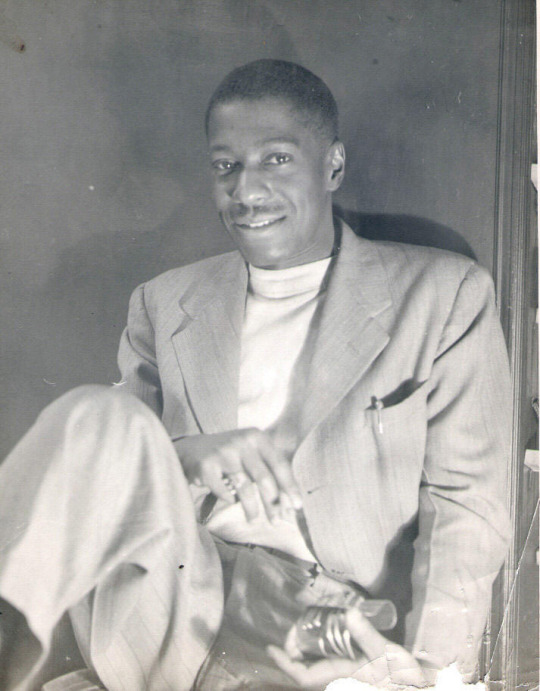
Arthur Smith was born to Jamaican parents in Cuba in 1917. His family settled in Brooklyn in 1920 and Smith showed artistic talent at an early age, winning honorable mention as an eighth grader in a poster contest held by the American Society for the Prevention of Cruelty to Animals. Encouraged to apply to art school, he received a scholarship to Cooper Union for the Advancement of Science and Art.
There he was one of only a handful of black students, and his advisors tried to steer him towards architecture, suggesting he might readily find a job in the civil sector of that profession. His lack of proclivity for mathematics eventually forced him to abandon this path, however, and he turned to commercial art and a major in sculpture, training that would prove invaluable.
After graduating in 1940, Smith worked first with the National Youth Administration and later for Junior Achievement, an organization devoted to helping teenagers find employment. He also took a night course in jewelry making at New York University. That and the friendship with Winifred Mason, a black jewelry designer who became his mentor, set him on the course of his adult artistic life. Mason had a small jewelry studio and store in Greenwich Village, and Smith became her full time assistant. He subsequently moved from Brooklyn to the Village’s Bank Street. In 1946 Smith opened his own studio and shop on Cornelia Street in the village with the financial assistance of a near-stranger who wished to undermine Mason because of bad feelings over business transactions.
Cornelia Street was an “Italian block” then, and Smith suffered racial violence from some of his neighbors. His store-front windows were smashed on one occasion and he was made to feel dangerously unwanted. Soon after, he moved to 140 West Fourth Street just 1/2 block from Washington Square park, the heart of Greenwich Village where as an openly gay black artist he felt more at home
The new store was better located business-wise and socially, and Smith’s career began to take off. In addition to selling from this new location, he started to sell his wares to craft stores in Boston, San Francisco, and Chicago, and by the mid-1950’s he had business relationships with Bloomingdale’s and Milton Heffing in Manhattan, James Boutique in Houston, L’Unique in Minneapolis, and Black Tulip in Dallas.
An important early influence on Smith’s career was Tally Beatty, a young black dancer and choreographer. Beatty introduced Smith to the dance world “salon” of Frank and Dorcas Neal, where he became acquainted with some of the city’s leading black artists including writer James Baldwin, composer and pianist Billy Strayhorn, singers Lena Horne and Harry Belfonte, actor Brock Peters, and expressionist painter Charles Sebree. Through Beatty, Smith also began to design jewelry for several avant-garde black dance companies, including, in addition to Beatty’s own, those of Pearl Primus and Claude Marchant. These commissions encouraged him to design on a grander scale than he might otherwise have done, and the theatricality of many of his larger pieces may well reflect this experience.
In the early 1950’s Smith received feature pictorial coverage in both Vogue and Harper’s Bazaar and was also mentioned in The New Yorker shopper’s guide, “On the Avenue.” For many years thereafter he ran a small advertisement in the back of The New Yorker. By the 1960’s he had begun to use silver more readily in his jewelry, and as his client base increased so did his custom designs. He received a prestigious commission from the Peekskill, New York, chapter of the National Association for Advancement of Colored People, for example, to design a brooch for Eleanor Roosevelt, and he made cufflinks for Duke Ellington that incorporated the first notes of Ellington’s famous 1930 song “Mood Indigo.”
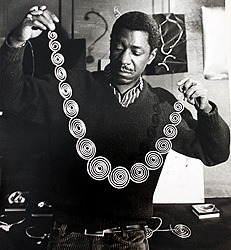
In 1969 he was honored with a one-man exhibition at New York’s Museum of Contemporary Crafts (now the Museum of Art and Design), and in 1970 he was included in Objects: USA, a large traveling exhibition organized by Lee Nordness, an influential early dealer in craft objects. After his death 3 major exhibits were organized celebrating his work; "Authur Smith A Jeweler's Retrospective" at the Jamacia Arts Center in Queens NY, 1990, "Sculpture to Wear; Art Smith and his Contemporaries", at the Gansevoort Gallery, NYC, 1998, and "From the Village to Vogue" at the Brooklyn Museum., 2008. Small catalogues from the 2 museum shows are available. The definitive collection and exhibit of all the artist jewelers of Art Smith's generation is beautifully illustrated and discussed in "Messengers on Modernism American Studio Jewelry 1940-1960", written by Toni Greenbaum published by Flammarion and the Montreal Museum in 1996. Smith had had a heart attack in the 1960s, and by the late 1970s his health had declined. The shop on West Fourth was closed in 1979 and Art Smith died in 1982.
excerpted from the Brooklyn Museum's FROM THE VILLAGE TO VOGUE: THE MODERNIST JEWELRY OF ART SMITH show catalogue
0 notes